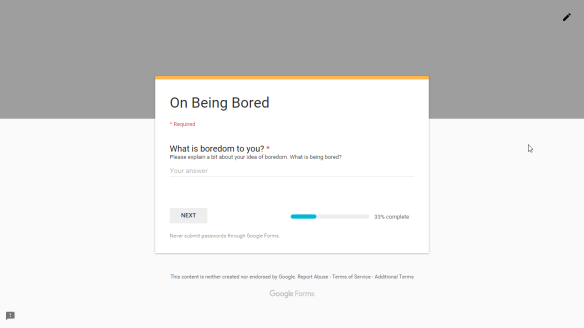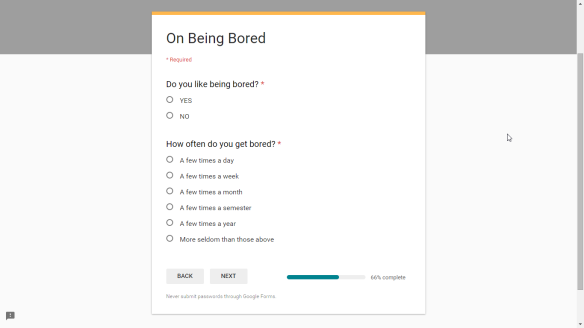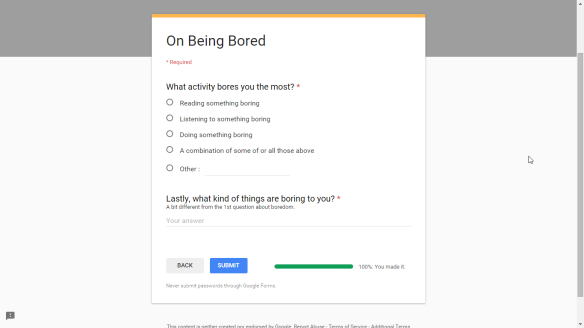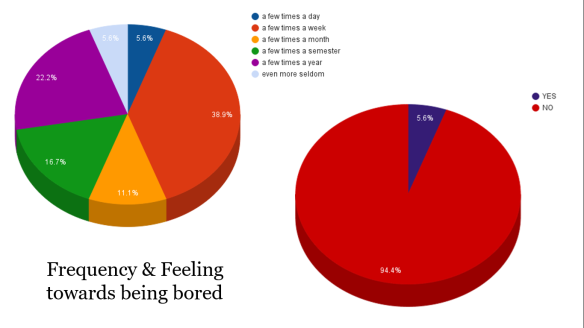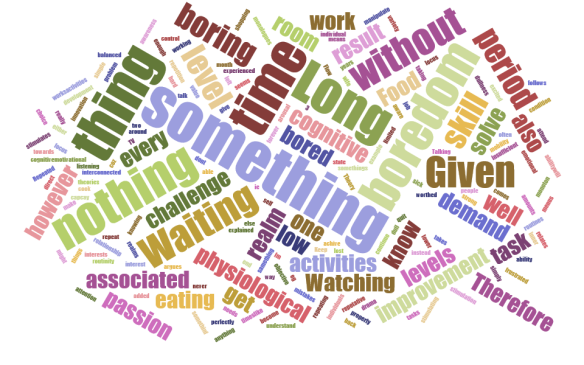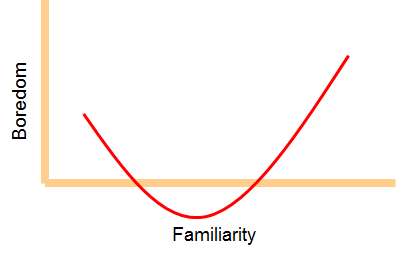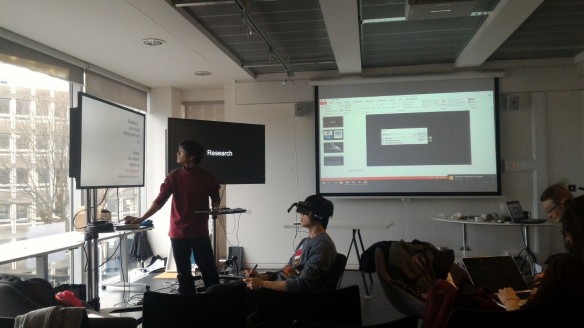Introduction
NeuroGame is an experimental approach to the problems involved in neurorehabilitation utilising techniques and technologies adopted in game developments. Consequently, two frameworks very distinct in nature—conceptual and technical, collaboratively drive the whole project.
Context
Conceptual Framework: Neurorehabilitation
Neurorehabilitation is interested in assisting patients who are recovering from consequential injuries and illness. The mechanical treatment and assistance are offered by teams of medics and therapists working collaboratively.
The Multi-disciplinary Team (MDT) consist of a medical doctor acting as the coordinator, a clinical psychologist, medical staff, a speech/language therapist, a senior nurse, an occupational therapist, a physiological therapist, and a social worker.
They hold a meeting once a week to discuss key issues and setting goals and activities relevant to the treatment. The complexities involved:
- Interaction, both among the actors (the team member) and between these people and information. The way data is presented is neither appealing nor memorable. And more time is being spent on meeting rather than actual work.
- Relationship between the patient’s motivation and the mechanical treatment offered by the team. It takes both aspects to reach a satisfying outcome.
Technical Framework: Pixel, Capture, Glitch, and Game
Game development technologies and tools can be broadly categorised as:
- 3D modelling
- Game engine
- Scenario & scripting
In relation to the previous work and the lectures, the project is concerned in a topic of psychology and cognitive science: memorisation & recollection.
How can information be efficiently stored (memorisation)? How can recollection be performed quickly yet accurately to improve decision making?
Hence, my enquiry:
“I seek to improve the quality of the team interaction through gamification”
Research
Conceptual Exploration
The MDT meetings
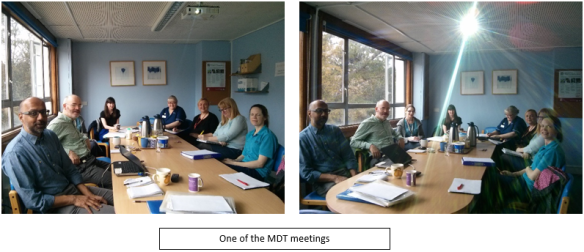
Several forms of documentation: personal notes and personally/collectively experienced stories, patient’s medical record, and historical documentation of each meeting (Ms Word doc).
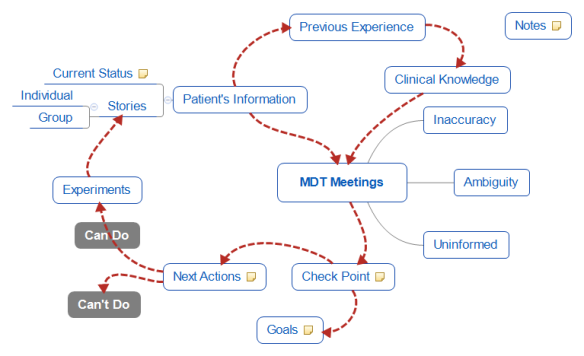
Flow of Information
An interesting insight: the whole knowledge (of a case) is vague, distributed, and amorphous. One can argue that it encompasses the whole process and documentation (thus everywhere), but it is impossible to reconstruct and store it into one single medium (thus nowhere).
The interpretation of information as knowledge is very dependent on its meta-data, e.g. contexts. To illustrate, each person can have the same information but different contexts, and thus different knowledge.
Questionnaire
A questionnaire to the MDT inquiring on three topics:
1. On the patient
37.5 % ever confused the patients one another. 83.3% ever had difficulties recalling stories.
Most build mental association; others rely on medical records. Salient features can help differentiate cases.
2. On the treatment
All agree that internal factors (mood/emotion) play the bigger role.
It is also worth noting that half identify themselves as an essential external factor.
3. On the MDT meeting
Most say that while the meetings are useful and of good quality, they need to be more efficient. Most are also interested in viewing the case from others’ viewpoints.
Technical Exploration
This was more of a labour-intensive than a clever one, admittedly. There are 3 distinct aspects of game development, add a data tier, and you have 2 more. Much time was spent in switching between these “contexts”.
Theoretical Exploration
There are four theories worth mentioning within this section.
1. Memory Palace
The Ancient Greek’s concept of memorisation. Cited by Yates, Luria, O’Keefe and Nadel, the theory establishes the significance of spatial association.
2. Visual & Spatial Orientation
Supporting the memory palace, Carruthers asserts that visual image needs to be attached to a piece of memory in the first place.
3. Mnemosyne
Warburg’s masterpiece informs us of his stance object-information associations. However, the Mnemosyne is more than just a static map of information: the juxtaposition of an image to another can represent and/or incite different perceptions and understanding.
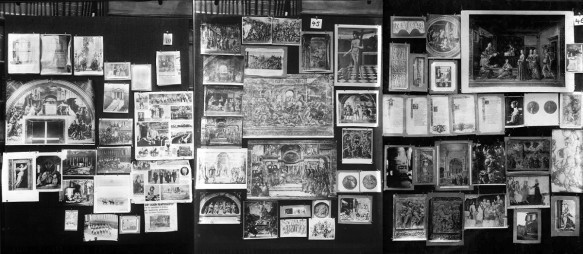
4. Theatre of Memory
Giulio Camillo’s work is a physical representation of above concepts. It shows how association of a piece of memory to both an object and its surrounding, i.e. points of reference, works in a real world space.
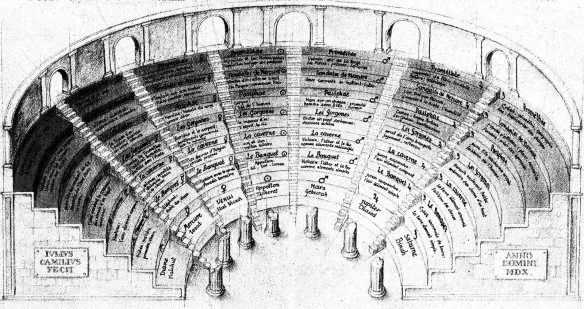
Formulation of the design opportunity:
“Virtual environment built on top of game platform to represent discussion on neurorehabilitation.”
Solution
The NeuroGame starts with a building—the Temple of Mind, that represents the patient’s case.

Inside are 5 interactive pillars. The thin pillar holds general information regarding diagnoses and conditions. Each of the others represents a key issue; starting from left to right:
- book—cognitive and language,
- bird wing—mobility,
- mirror—emotion,
- key—housing.

When the user interacts with an object an information panel pops up. The three horizontal bars represent the percentage of achieved, partially achieved, and not yet achieved goals and team activities associated with the key issue.
The “Proceed” button opens another room behind the object.

The Room of Cognition & Language is a model of San Marco Piazza in Venice. St Mark’s Campanile and Basilica, as well as the evenly placed pillars on each side of the piazza pose as the main points of reference.
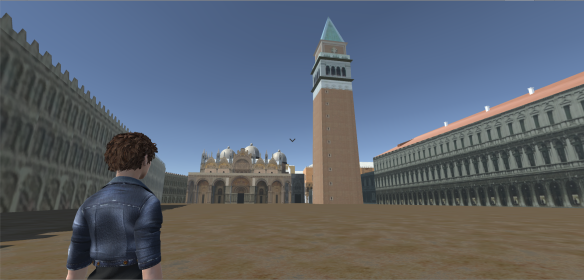
The Room of Mobility is a moon surface with two landmarks—The New York’s Empire State Building and London’s Gherkin, and a lot of craters as points of reference.

The Room of Emotion is a forest. The trees and bushes are the natural reference points.

The Room of Housing is more of an experimental one, with no clear point of reference but similar looking buildings—colour being the only apparent distinctive feature.
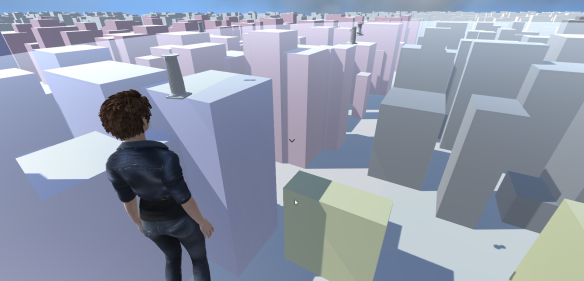
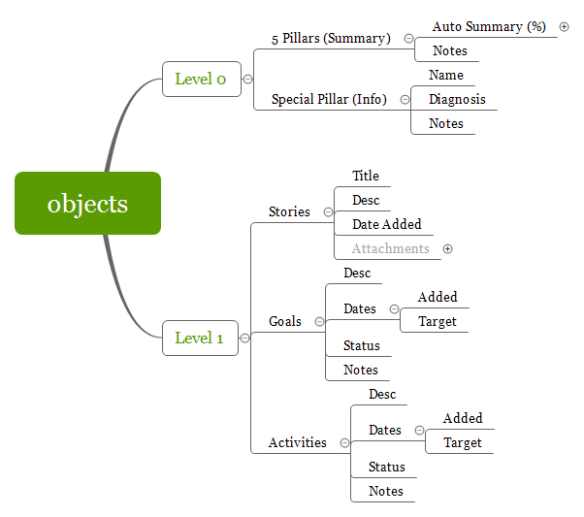
The pillars and their properties
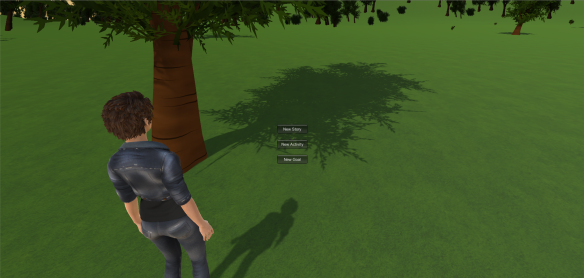
The player is trying to create a new pillar
References
Carruthers, Mary J. The book of memory: A study of memory in medieval culture. No. 10. Cambridge University Press, 1992.
Foer, Joshua. Moonwalking with Einstein: The art and science of remembering everything. Penguin, 2011.
Luria, Aleksandr R. “The mind of a mnemonist: A little book about a vast memory (L. Solotaroff, Trans.).” (1968).
O’keefe, John, and Lynn Nadel. The hippocampus as a cognitive map. Vol. 3. Oxford: Clarendon Press, 1978.
Yates, Frances Amelia. The art of memory. Vol. 64. Random House, 1992.
Web pages
http://warburg.library.cornell.edu/
Click to access HCMComplete.pdf
http://ivebeenreadinglately.blogspot.co.uk/2012/01/giulio-camillos-theater-of-memory.html
Resources
https://www.assetstore.unity3d.com/en/
https://3dwarehouse.sketchup.com/
http://archive3d.net/?a=download&id=59436110
http://tf3dm.com/3d-model/old-scroll-feather-candle-52927.html


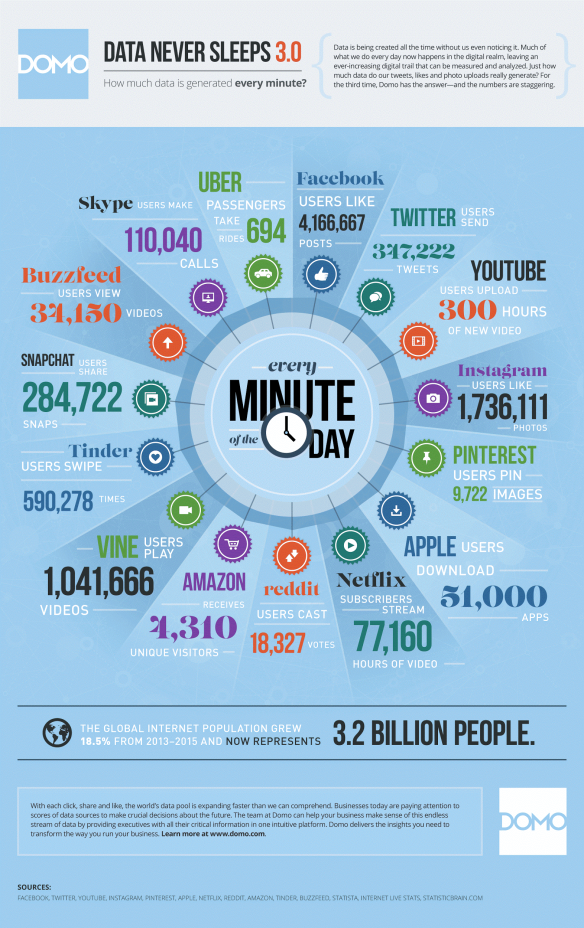
![2016-05-02 10_39_51-Reportv.2.docx [Compatibility Mode] - Word](https://casuallynoted.wordpress.com/wp-content/uploads/2016/05/2016-05-02-10_39_51-reportv-2-docx-compatibility-mode-word.png?w=584)

